
The Sagrada Familia in Barcelona is a masterpiece of architectural innovation and artistic brilliance. Designed by the renowned architect Antoni Gaudí, this basilica has been under construction since 1882, captivating visitors with its intricate details and symbolic elements.
In exploring the **Fascinating Facts About Sagrada Familia in Barcelona, Spain**, one uncovers the rich history and unique features that make this landmark a symbol of Catalan culture. From its stunning facades to its towering spires, the Sagrada Familia stands as a testament to Gaudí's visionary genius and dedication to his craft.
Fascinating Architectural Features of Sagrada Familia
One of the most striking architectural features of the Sagrada Familia is its **hyperboloid structures**, which create a sense of movement and light. These geometrically complex forms help to distribute weight and provide structural integrity, showcasing Gaudí's understanding of both form and function. The combination of these shapes not only enhances the aesthetic appeal but also serves a practical purpose, allowing for greater height and stability.
The basilica's **intricate facades** also tell stories through their detailed sculptural elements. Each facade—Nativity, Passion, and Glory—reflects different aspects of Christ's life. The Nativity Facade, for instance, is adorned with a variety of flora and fauna, symbolizing the creation and birth of Jesus. In contrast, the Passion Facade possesses a stark, angular design that conveys the suffering and sacrifice of Christ, illustrating Gaudí's ability to evoke emotion through architecture.
Another remarkable feature is the **tree-like columns** that support the ceiling of the basilica. These columns are designed to look like branching trees, allowing for a forest-like atmosphere inside. This innovative approach not only enhances the visual experience but also effectively distributes the weight of the roof, demonstrating Gaudí's genius in integrating nature with architectural design. Visitors often find themselves awestruck by the interplay of light and shadow created by these columns.
Moreover, the Sagrada Familia boasts **colorful stained glass windows** that significantly contribute to the building's ethereal ambiance. The windows are designed to filter sunlight, casting vibrant hues throughout the interior. The brilliant use of color is not random; it is meticulously planned to represent different times of the day and seasons, allowing the basilica to evolve with the natural light. This feature underscores Gaudí's aspiration to create a spiritual and uplifting environment.
Historical Significance of Sagrada Familia in Barcelona
The Sagrada Familia holds immense historical significance as a symbol of Catalan identity and creativity. Its construction began in 1882 and has continued for over a century, reflecting the evolution of architectural styles and techniques. This basilica represents not only the ambitions of Antoni Gaudí but also the aspirations of the city of Barcelona and its people, making it a focal point of cultural pride.
Throughout its history, the Sagrada Familia has been a site of both pilgrimage and controversy. Its religious significance is palpable, as it is dedicated to the Holy Family and intended to be a place of worship. However, the long construction timeline has sparked debates about its future, funding, and the vision of Gaudí versus modern interpretations. The ongoing work to complete the basilica is viewed by many as a testament to human perseverance and dedication.
In addition to its architectural marvel, the Sagrada Familia has been a UNESCO World Heritage Site since 2005, further solidifying its global significance. This recognition highlights its cultural importance, showcasing how Gaudí's innovative designs have influenced architecture worldwide. The basilica serves as an educational platform, attracting scholars, architects, and tourists eager to learn about its rich history and unique design.
The Sagrada Familia also plays a vital role in Barcelona's economy, drawing millions of visitors each year. This influx supports local businesses, from restaurants to shops, reinforcing the connection between culture and commerce. As the basilica nears completion, it continues to inspire new generations to appreciate the beauty of architecture and the cultural heritage of Spain.
Exploring the Artistic Influence of Antoni Gaudí on Sagrada Familia
Antoni Gaudí's artistic influence on the Sagrada Familia is profound and multifaceted, reflecting his unique vision of merging architecture with nature. Gaudí believed that architecture should not only serve a functional purpose but also inspire a sense of wonder and spirituality. His innovative designs, characterized by organic forms and intricate details, are evident throughout the basilica, creating a mesmerizing experience for visitors.
Some key elements of Gaudí's artistry that shape the Sagrada Familia include:
- Natural Forms: Gaudí drew inspiration from the shapes and patterns found in nature, evident in the basilica's flowing lines and organic structures.
- Symbolism: Each structural element is imbued with meaning, from the towering spires representing biblical figures to the floral motifs symbolizing creation.
- Color and Light: The strategic use of stained glass allows light to dance within the interior, enhancing the atmosphere and spiritual experience.
- Geometric Innovation: His use of hyperbolic paraboloids and catenary arches not only serves aesthetic purposes but also ensures structural integrity.
Furthermore, Gaudí's pioneering approach to architectural design has established a legacy that extends beyond the Sagrada Familia. His work has paved the way for future generations of architects, encouraging them to explore the relationship between structure, environment, and art. Gaudí's philosophy of integrating natural elements into urban design acts as a guiding principle for sustainable architecture today.
In summary, Antoni Gaudí's artistic influence is a cornerstone of the Sagrada Familia's identity. By embracing natural forms, symbolism, and innovative geometric solutions, Gaudí has created a basilica that is not only visually stunning but also rich in meaning and spiritual resonance. This iconic structure embodies his belief that architecture can transcend mere functionality to evoke emotion and connection with the divine.
Visitor Experience: Tips for Exploring Sagrada Familia
When visiting the Sagrada Familia, planning ahead can significantly enhance your experience. It is advisable to purchase tickets online in advance to avoid long queues, especially during peak tourist seasons. Consider choosing a guided tour for a deeper understanding of Gaudí's vision and the basilica's intricate details. This allows you to appreciate the artistry and symbolism embedded in every aspect of the structure.
Arriving early in the morning or later in the afternoon can also offer a more peaceful experience, as these times are typically less crowded. Make sure to take your time exploring each of the three facades: the Nativity, Passion, and Glory. Each façade tells a unique story and reflects different themes of Christ’s life, making them essential stops on your journey through the basilica.
Don't forget to allocate time to admire the stained glass windows inside the Sagrada Familia. The interplay of light and color is a mesmerizing sight and adds to the spiritual ambiance of the space. Remember to bring a camera, as the stunning architecture and colorful displays provide fantastic photo opportunities from various angles.
Lastly, consider visiting the nearby Gaudí's other works, such as Park Güell or Casa Batlló, to gain a broader understanding of his artistic influence on Barcelona. Each site complements the experience of the Sagrada Familia, showcasing how Gaudí's vision transformed the city into a vibrant tapestry of architectural wonder.
The Ongoing Construction of Sagrada Familia: A Modern Marvel
The ongoing construction of the Sagrada Familia is a remarkable example of how modern technology can harmonize with historical craftsmanship. Despite having begun in 1882, the project has evolved through the use of contemporary techniques and materials, such as 3D printing and digital modeling. These advancements allow architects and builders to bring Gaudí's intricate designs to life while adhering to the original vision, making the Sagrada Familia a true blend of past and present.
The construction timeline of the Sagrada Familia reflects both challenges and milestones, with significant progress made in recent years. As of now, approximately **70%** of the basilica is complete, with plans to finish by **2026**, coinciding with the centenary of Gaudí's death. This ambitious goal illustrates the dedication to honoring Gaudí’s legacy while ensuring the basilica continues to inspire future generations. Key phases of the ongoing construction include:
- Completion of the **Nativity Facade** and the **Passion Facade**.
- Construction of the **Glory Facade**, which will serve as the main entrance.
- Raising the remaining **towers**, which will symbolize the twelve apostles and other significant biblical figures.
Another fascinating aspect of the Sagrada Familia's construction is its funding model. Primarily financed through visitor ticket sales and private donations, this approach emphasizes the community's involvement and the importance of preserving this architectural marvel. The ongoing work has sparked international interest, making it not only a local treasure but a global icon of cultural heritage.
As the Sagrada Familia continues to rise against the skyline of Barcelona, it stands as a testament to human perseverance and creativity. The combination of Gaudí's visionary genius and modern construction techniques creates a unique narrative that captivates millions of visitors each year. The ongoing construction is not merely about completing a building; it is about completing a legacy that transcends time, embodying the spirit of both Barcelona and its rich architectural history.
Symbolism and Meaning Behind Sagrada Familia’s Design
The design of the Sagrada Familia is deeply rooted in **symbolism**, reflecting a harmonious blend of spirituality and nature. Each element of the basilica is carefully crafted to represent various aspects of Christianity, particularly the life of Jesus Christ. The three main facades—Nativity, Passion, and Glory—each convey distinct theological themes, offering visitors a visual narrative that enhances their spiritual journey as they explore this architectural marvel.
One of the most significant symbols within the Sagrada Familia is the **twelve towers**, which represent the apostles. Each tower not only contributes to the structure's verticality but also serves as a visual reminder of the teachings and influence of these foundational Christian figures. Additionally, the tallest tower, dedicated to Jesus Christ, will reach a height of **172.5 meters**, symbolizing his divine nature and central role in Christianity.
Another captivating aspect of the basilica's design is its use of **natural motifs**. Gaudí was inspired by the beauty of the natural world, and this is evident in the intricate patterns found in the stone carvings and the organic forms of the columns. These features create a sense of connection between the architecture and the environment, emphasizing the belief that nature is a reflection of the divine. The use of flora and fauna in the Nativity Facade, for instance, vividly illustrates the theme of creation.
The **stained glass windows** also play a crucial role in conveying deeper meanings. The colors and designs of these windows are deliberately chosen to evoke specific emotions and spiritual experiences, transforming the interior of the basilica into a dynamic interplay of light. As sunlight filters through, it reflects the changing moods and seasons, creating a spiritual ambiance that invites contemplation and connection with the divine.
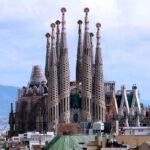 The Majestic Journey from La Sagrada Familia to Barcelona Port
The Majestic Journey from La Sagrada Familia to Barcelona Port Neri Relais & Chateaux - Boutique Hotel
Neri Relais & Chateaux - Boutique Hotel Explore La Rambla: Shops & Street Performers
Explore La Rambla: Shops & Street PerformersIf you want to know other articles similar to Fascinating Facts About Sagrada Familia in Barcelona, Spain you can visit the category WHERE YOU CAN GO.
Leave a Reply

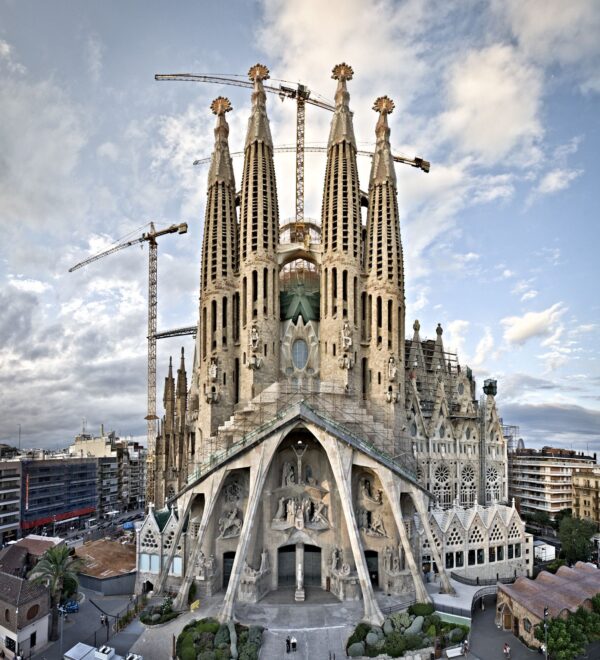
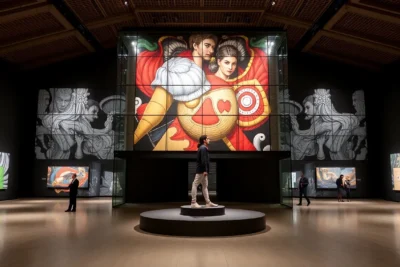
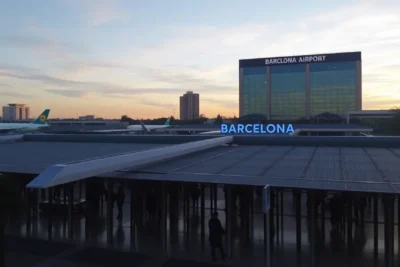
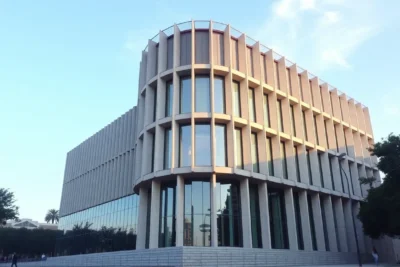
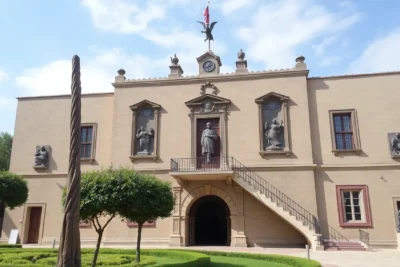
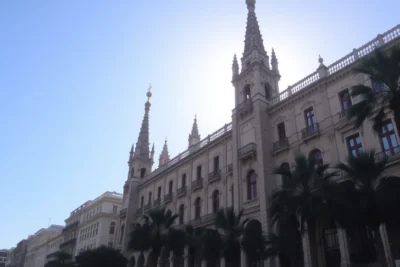
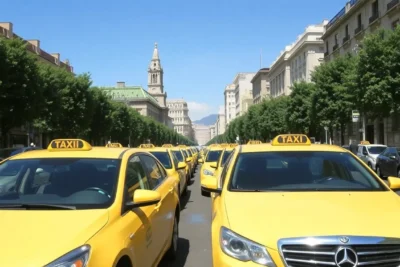
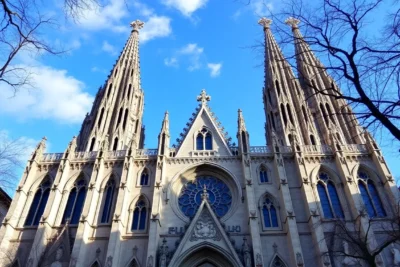
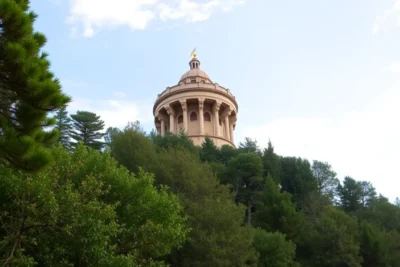
Read more!